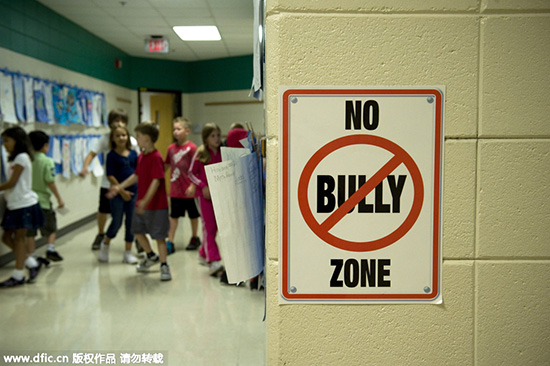Female bullies a shadowy menace, claims scholar
By Song Jingyi (chinadaily.com.cn) Updated: 2015-07-22 15:54
|
|
Editor's note: With cases of school bullying on the rise recently, we focus on the phenomenon of female bullies in China. It is a misconception that boys are the most dominant types of bullies. In fact, girls can be just as violent as boys when it comes to school bullying. Here, we invite Chu Zhaohui, a researcher who works in Chinese Academy of Educational Sciences, to talk about the rising number of bullying cases female adolescents are involved in.
1. Why have female school bullies been ignored until now?
The stereotype of school bullying has long been focused on boys harassing other boys, while girls have also perpetrated violence but have been largely ignored. In fact, female school bullying has been happening for decades and likely even before that.
It has been overlooked because girls always tend to practice some covert, subtle and quiet actions that are difficult for outsiders to detect and investigate, like verbal attacks targeting the victim, spreading rumors or generating lies about the victim and excluding the victim while forming cliques.
These behaviors are just less noticeable than two boys physically fighting so it makes it harder for teachers or parents to reprimand girls for bullying.
On the other hand, victims (usually peers) also don't tell their parents or trusted relatives about being bullied. Research tells us that victims often feel that reporting a bully won't do any good, fearing that the bully would retaliate and make her life worse. She would rather try to bear the misery alone than risk escalating the problem.
Additionally, victims are concerned that no one would trust them and afraid that people would assume they were not telling the truth. As a result, these bullying behaviors occur repeatedly to one victim, constituting much more serious, vicious, recurring bullying.
2.Which kind of factors lead to the female school bullying?
Adolescence
The majority of female bullying happens in the middle school years, most likely when girls are going through social changes and beginning to change friends to form their own group, they become involved in certain activities and exclude peers who are not involved in the same ones.
Family
Parents are a child's first teachers, as we all know children and teens tend to model the behavior of their parents or other authority figures. Kids often witness bullying behavior at home or become the victims of bullying, so they are more likely to exhibit bullying behaviors themselves. When children receive physical punishment at home, they are affected subtly and tend to develop negative self-concepts and self-expectations, and may therefore attack others before they are attacked—bullying others gives them a sense of power and importance.












